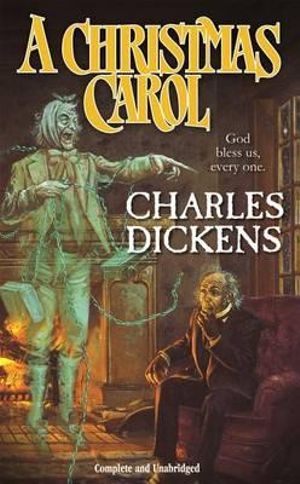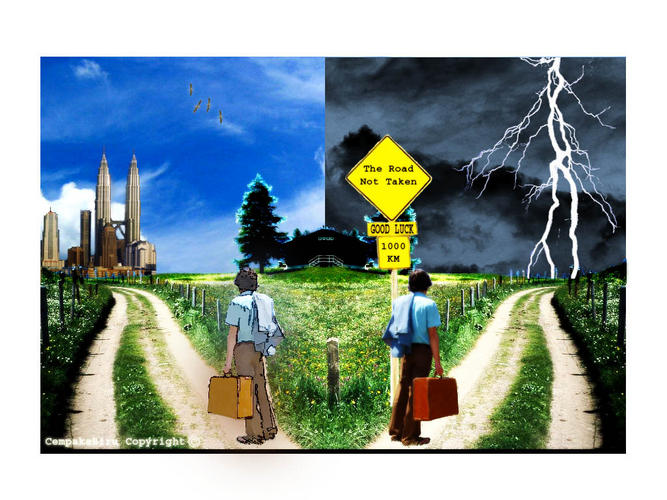
What is A Christmas Carol by Charles Dickens about?
Set in the 1840s on Christmas Eve, A Christmas Carol by Charles Dickens chronicles the personal transformation of the protagonist, Ebenezer Scrooge, the proprietor of a London counting house. A wealthy, elderly man, Scrooge is considered miserly and misanthropic: he has no wife or children; he throws out two men collecting for charity; he bullies and underpays his loyal clerk, Bob Cratchit; and he dismisses the Christmas dinner invitation of his kind nephew, Fred. Moreover, Scrooge is a strong supporter of the Poor Law of 1834, which allowed the poor to be interned in workhouses.
As he prepares for bed on Christmas Eve in his solitary, dark chambers, Scrooge is visited by the ghost of his former partner, Jacob Marley. In life Marley was very similar in attitude and temperament to Scrooge: remote, cruel, and parsimonious. In death he has learned the value of compassion and warns Scrooge to reform his ways before it is too late. Marley announces that Scrooge will be visited by three more specters: the Spirits of Christmas Past, Present, and Yet to Come.
The Ghost of Christmas Past takes Scrooge back to his unhappy childhood, revealing that the young boy’s experiences with poverty and abandonment inspired a desire to succeed and gain material advantage. Unfortunately, Scrooge’s burgeoning ambition and greed destroyed his relationship with his fiancée and his friends.
The Ghost of Christmas Present is represented by a hearty, genial man who reminds Scrooge of the joy of human companionship, which he has rejected in favor of his misanthropic existence.
Finally, the Ghost of Christmas Yet to Come appears in a dark robe and shrouded in mystery. Silently, the ghost reveals the ambivalent reaction to news of Scrooge’s own death. Scrooge realizes that he will die alone and without love, and that he has the power and money to help those around him – especially Bob Cratchit’s ailing son, Tiny Tim. Scrooge begs the ghost for another chance and wakes in his bed on Christmas morning, resolved to changing his life by being generous and loving to his family, employees, and the poor.
Classifying A Christmas Carol
For some readers A Christmas Carol resonates as a gothic ghost story, at times chilling and terrifying and at other times, extremely funny. Other readers see the story as a time travel narrative. Dickens in effect blended realism and the supernatural to create a world in which the gothic and the mundane sit side by side. Dickens himself said he was here taking old nursery tales and “giving them a higher form” (Stone, Harry 1999, ‘A Christmas Carol: Giving Nursery Tales a Higher Form’). With its dark, chilly setting and its supernatural visitors, A Christmas Carol draws on elements of the gothic novel when Scrooge’s door-knocker turns into Jacob Marley’s face. The narrator provides a number of descriptions in which gothic elements are interwoven with freezing, icy imagery to emphasise the atmosphere of mystery and to remind us of the protagonist’s icy heart.
A Christmas Carol as a Cultural Myth
According to Juliet John, A Christmas Carol has become a “cultural myth” providing “a parable for the modern, commercial age” (John, Juliet 2011, ‘Dickens and Mass Culture’). As a morality tale, in which evil is exposed, virtuous characters like the Cratchits are rewarded, and everyone celebrates at the conclusion. However, there are issues raised in A Christmas Carol that remain unresolved at the conclusion of the novel. The sinister children of Want and Ignorance, do not go away just because Scrooge has been reformed, but the narrator tells us nothing of their future. Their role is more allegorical than that of other characters. Dickens uses them as an important warning to his readers and to Scrooge as the frighteningly ugly face of 19th century poverty. Unless social reform takes place urgently, Want and Ignorance will grow into hungry, resentful predators. The fact that Dickens even raised the issue of the miserable lives of street children at all marks an important attempt by him to make his readers ponder their own social responsibilities.
Historical Context of A Christmas Carol
While A Christmas Carol is primarily received as a ghost story, it is also a damning expose of social inequality in 1840’s Britain. Dickens was deeply agitated by what he perceived as the inertia of the British government and wealthy middle classes to help those less fortunate than themselves. A Christmas Carol was written at the beginning of the ‘Hungry Forties’ a period that encompassed the catastrophic Irish potato famine, as well as intense suffering for the English working classes. Dickens uses A Christmas Carol to not only attack the Utilitarian philosophy of Jeremy Bentham, who justified the centralisation of Poor Relief in workhouses, but also to lambast the work of Thomas Malthus in his Essay on the Principle of Population. Whilst in abstract these principles might seem logical, when applied to suffering individuals, their underlying brutality becomes obvious.
Ebenezer Scrooge
For most readers Scrooge represents the worst charactertistics of his society. Fixated with material goods at the expense of all human connection, particularly with his clerk Bob Cratchit, Scrooge is an allegorical embodiment of the forces of capitalism underpinning Britian’s economy in the 1840’s. For Dickens, he represented everything that was wrong with society in an increasingly industrialised world where human relations took second place to profits.
Dualism in Dicken’s Writing
The world of the early Dickens is organized according to a dualism which is based in its artistic derivation on the values of melodrama: there are bad people and there are good people, there are comics and there are characters played straight. The only complexity of which Dickens is capable is to make one of his noxious characters become wholesome, one of his clowns turn out to be a serious person. The most conspicuous example of this process is the reform of Scrooge in A Christmas Carol shows the phenomenon in its purest form.
We have come to take Scrooge so much for granted that he seems practically a piece of Christmas folklore; we no more inquire seriously into the mechanics of his transformation than we do into the transformation of the Beast into the young prince that marries Beauty in the fairy tale. Yet Scrooge represents a principle fundamental to the dynamics of Dickens’ world and derived from his own emotional constitution – though the story, of course, owes its power to the fact that most of us feel ourselves capable of the extremes of both malignity and benevolence.
Redemption in A Christmas Carol
Can A Christmas Carol be seen as a tale about redemption in a man who has ostracized himself from his society? While the narrative is focused on Ebenezer Scrooge’s learning experiences and his reintegration into the community, his story also forms part of a broader allegory through which Dickens invites his readers to consider Christmas as a time of renewal and hope and to think about how they themselves might redeem and be redeemed.
The ‘Scrooge Problem’ – the Questioning of Scrooge’s Transformation
Elliot L. Gilbert’s essay: ‘The Ceremony of Innocence: Charles Dickens’ A Christmas Carol’ addresses ‘the Scrooge problem’, that is, the critical tradition of questioning the sincerity of Scrooge’s sudden transformation from being mean-spirited to kind-hearted. Gilbert admits that his support for Scrooge’s change of heart is not free from doubt, as similarly to House and Johnston, he feels that the ease of Scrooge’s alteration is questionable. Furthermore, to accept the overnight metamorphosis of a man who has spent a lifetime bullying clerks, revelling in misanthropy and grinding the faces of the poor, is ‘to deny all that life teaches in favour of sentimental wishful thinking.’
Gilbert’s essay provides a new hypotheses to explain the reader’s misgivings regarding the plausibility of Scrooge’s radical conversion; he is merely returning to his childhood innocence. He explains why he views A Christmas Carol to be metaphysical; it is because it portrays the journey of a human being trying to rediscover his own childhood innocence. Such innocence Gilbert claims is evident in Scrooge’s encounter with the ghost of Christmas past, when Dickens has Scrooge’s fiancé break off their engagement, because the man she sees before her is not the man she first knew. Here, he reveals that Scrooge was not always bitter and mercenary, and therefore not so different from the man we are shown at the end of the novel. Thus, Scrooge’s new self is believable as it is in part his old self.
Private Online Tutoring of English using Zoom





